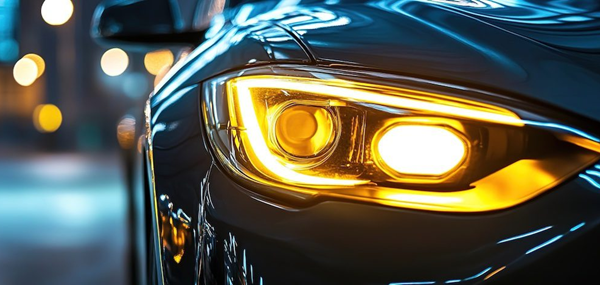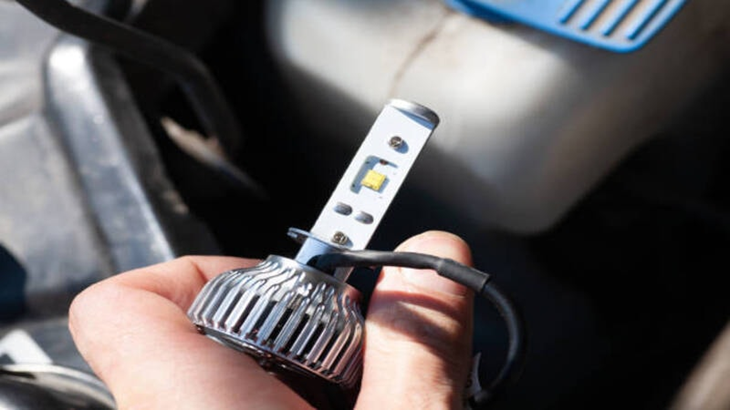21
Oct

Driving with dim or weakened headlamps is more than just an inconvenience. It can be an exceptionally dangerous proposition for anyone who regularly travels on rural roads at night. And while ultra-bright driving lights will certainly help with night vision, using them to compensate for weak headlamps is a quick way to get defected for non-compliant lighting. The only genuine solution is to replace fading halogen bulbs with brighter, long life LEDs.
Since the early 2000s, auto manufacturers have made transitioning away from inefficient halogen bulbs in favour of high output LEDs an industry-wide priority. It’s a clear matter of driver and public safety. And as the need for safety hasn’t been lost on aftermarket bulb manufacturers, they’ve made it their business to focus on overcoming the cost and technical barriers of making LEDs viable replacement parts for all vehicles operated in Australia.

While it’s easy for car, ute and RV owners to be dismissive about the performance potential of their consumable parts, upgrading their headlamps to high output LED car bulbs can literally be an eye opener. Although it’s been understood for decades that LEDs are brighter and clearer than old school filament-style bulbs, only now has the technology made one-to-one LED bulb replacements a viable possibility.
Modern, flicker-free H1/high beam, H4/dual beam, and H7/low beam LEDs are engineered to overcome the classic gating factors that have prevented LEDs from being used with reflector-type headlamp housings, and they include:
Ideally, with the plug and play simplicity of upgraded LED vehicle bulbs, high-end luxury and performance cars don’t have to be the only vehicles with LED headlamps. These bulbs bring all the benefits of increased visibility and safety to any car, ute or RV, without the need for costly and complex LED projection-type headlamp housings. And for anyone who’s on the fence over just how much of a difference modern LED automotive globes and bulbs actually make, they only need to look at the current generation of LED chips to see the light for themselves.
Make no mistake: while halogen headlamp bulbs have steadfastly ruled the automotive lighting landscape for decades, improvements in LED chip design have reshaped almost every expectation of LED car bulb performance. The need to make bulbs smaller and to reduce the amount of heat they generate all comes into play when designing headlamps. This is where advancements in chip technologies continues to be the most critical step in LED bulb development.
Today’s brightest, most powerful and most innovative LED auto replacement bulbs are powered by CSP (Chip Scale Package) and Z-ES (Zero-Error System) chip technologies. Both technologies represent major milestones in the development of LED auto globes and bulbs, with everything revolving around the key characteristics of CSP chips, which include:
Z-ES technology packaging gives CSP chips the ultra-high performance edge that allows upgraded automotive LED light bulbs to more precisely emulate classic halogen/halogen reflector beam patterns and boasts an array or attributes that include:
Because of their more precisely controlled angling and reduced glare, Z-ES LED replacement light bulbs for cars are more expensive than standard CSP-chipped bulbs. They both provide the same fundamental benefits that make LED car globes superior to halogens though, with the added advantage that their weather resistant IP-ratings can also protect them from the worst that the environment has to dish out.
Regardless of the type of vehicle or the application, the core advantages of upgraded LED replacement bulbs for cars are too compelling to ignore, and they include:
And with the ability to purchase upgraded car LED bulbs online from qualified e-retailers at any time, owners can lock in a 3- to 5-fold increase in their nighttime visibility in only a few clicks straight from the comfort of their home.
At the end of the day, while there’s no shortage of fog light, lightbar and driving light accessories on the market that are based on LED technology, a majority of the cars, utes, and RVs on the highway are still depending on halogen headlamps for their primary nighttime illumination. Eventually they’re going to weaken, though. That’s when owners should consider the feasibility of upgrading to high output LED car bulbs.
Upgrading to high output LEDs is one of the best investments an owner can make in their vehicle. Improvements in chip technology mean they’re brighter than ever; the level of cost savings and efficiency are additional indicators they won’t disappoint.